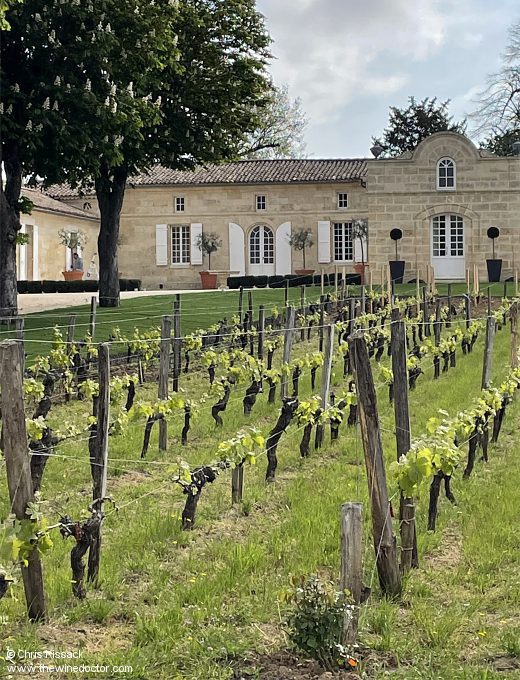Château Trotte Vieille
The vineyards of Château Trotte Vieille lie on the limestone plateau to the east of St Emilion, the cellars occupying a fairly prominent corner position on the road running out from the top of St Emilion. Having journeyed passed Château Villemaurine, en route to the various châteaux in the Mondot secteur and beyond including Château Troplong-Mondot, La Mondotte and Château Barde-Haut to name but three, Château Trotte Vieille sits in a fork in the road, the gateway to the château and grounds opening out onto on the road to the right, the cellars overlooking the road to the left. It is impossible to miss. This was true even when I first visited the region, many years ago now, at which time the buildings presented a very drab, tired, warehouse-like facade, somewhat out of keeping with the property’s status. It is even more the case today, the cellars having since undergone a breathtaking architectural transformation, completed in time for the 2021 harvest. The appearance today is less warehouse, more palace.
This prominent roadside position is perhaps relevant to the origins of the name of this château, although I am not sure how large a pinch of salt is required in order for us to believe the story. The property sits on the site of an old staging post, and legend has it that the resident was an old woman who would come down to the roadside to attend to the coaches, and to catch up on the gossip. Before long the stop became known as La Trotte Vieille, literally the old trotter, a reference to the old maid with a taste for idle talk. When I first read of this story I wasn’t convinced. Many years later, I have to say my opinion hasn’t really changed. Although, having said that, no-one has ever come up with an alternative theory, and the possibly apocryphal tale lives on.

